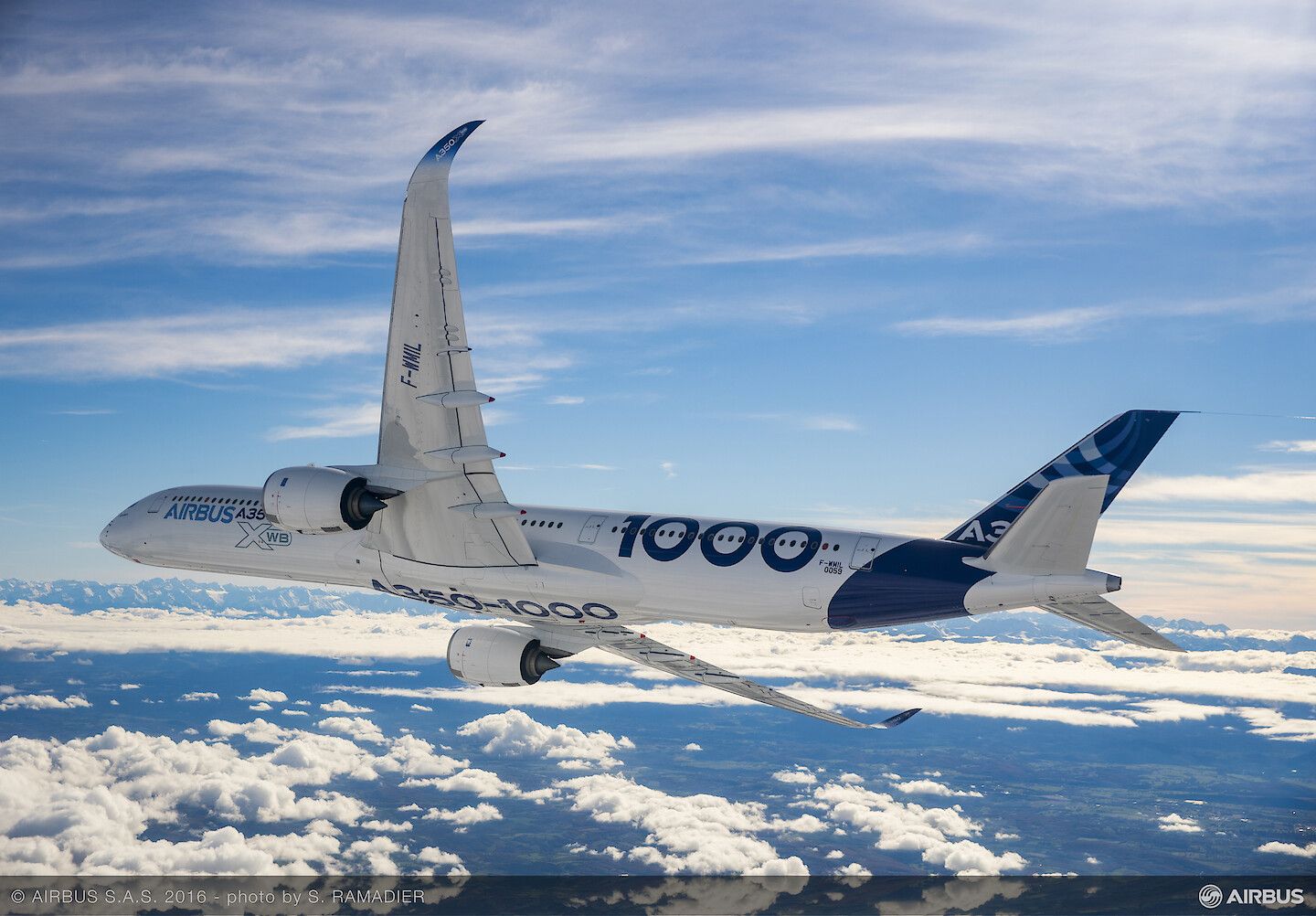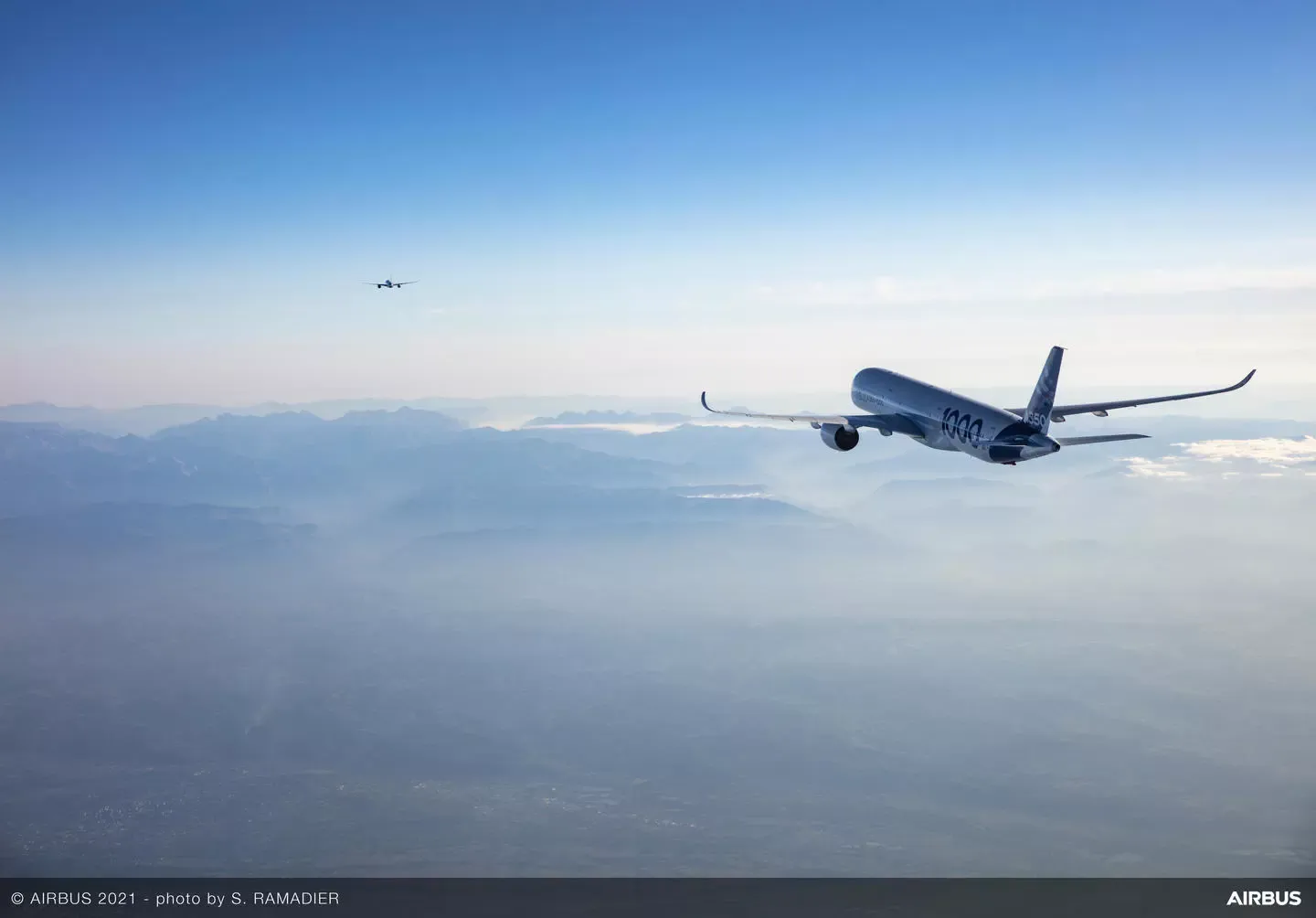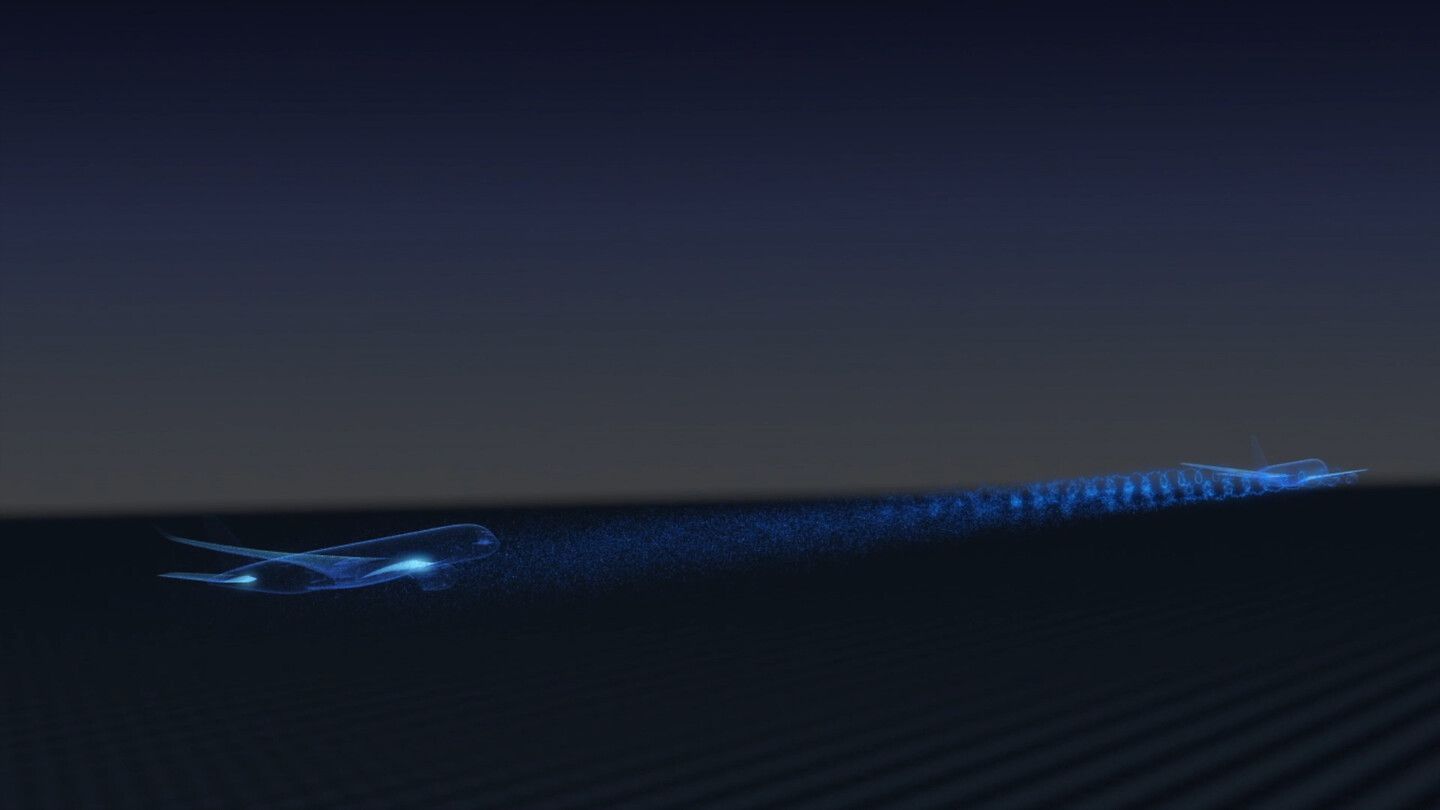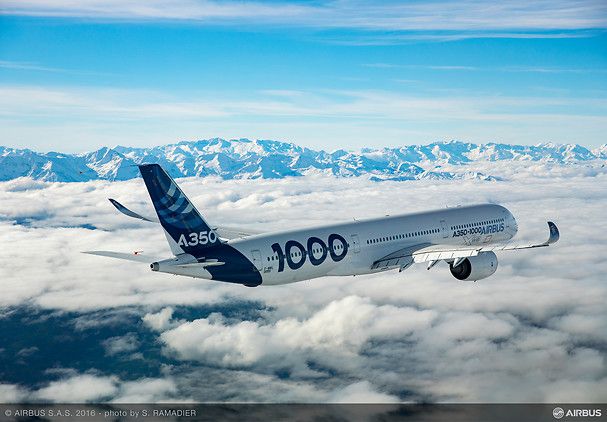During the 2019 Dubai Air Show, Airbus presented an innovative idea, fello’fly, to reduce the carbon footprint of passenger jets by using formation flights. Two passenger jets fly a few miles apart, with the follower aircraft feeding off the leader aircraft's downwash.
Inspired by the migration flight of geese, Airbus aims to use the energy of the predecessor to create lift for the successor aircraft. Airbus claims that a specialized V-shaped formation flight can reduce (for the follower aircraft) the fuel consumption by 5-10% during a long-haul flight. In addition, a measurable reduction in carbon emissions can be achieved.
The demonstration flight
In November 2021, Airbus tested the concept using two Airbus A350 aircraft on a transatlantic route. From Toulouse, France, to Montreal, Canada, an Airbus A350-900 led the way, while an A350-1000 followed in a V-shaped formation just two miles (three kilometers) behind.
Airbus saved six tons of carbon emissions during the flight, with a potential fuel savings of over 5%. A few parameters are essential in considering the practicality of the fello’fly program.
Flight safety
The first concern of any regulatory authority would be the safety of people onboard. Flying two fully-loaded aircraft close to each other can be a considerable safety risk. Military aircraft have been flying in even tighter formations for decades, and that is mainly done manually.
Passenger aircraft, when flying on air traffic highways, utilize the Traffic Alert and Collision Avoidance System (TCAS) onboard the aircraft. The TCAS ensures a safe horizontal and vertical distance between two aircraft and provides deviations in case they come on a collision course. The formation can be automated by including an advanced TCAS system to address the safety factor.
Aircraft coordination
With the fello’fly concept, Airbus allows the Air Traffic Controller (ATC) to pair and schedule aircraft to enter the formation flight. Aircraft pairing can be as early as during takeoff if two similar-sized aircraft are expected to follow a similar path for the majority of the flight. Existing aircraft are known to fly through air traffic highways or air tracks (over oceans) with the necessary distance between them.
This practice is in place to reduce congestion in the ATC system. Scheduling aircraft in pairs and coordinating them to follow a specific formation should be simple. For example, multiple aircraft taking off from a hub airport, such as DXB, around the same time heading west, can easily be coordinated in formation.
Market needs
With the proof-of-concept flight successful, there is a long road ahead for Airbus and its collaborators to prove its viability in the passenger market. Stakeholders have to invest considerable amounts in research and development of the flight program. The idea seems feasible, but the presented advantages are only up to 10% in fuel savings.
The question arises, is it worth putting the money and efforts into achieving a mere 10% reduction in fuel burn? While minimizing carbon emissions has merit, is the fello’fly program a robust solution to the environmental problem?
When electrical, hydrogen-powered, and hybrid aircraft offer far greater potential for reduced carbon footprint, comparable advantages of the fello’fly program are questionable. Given that the program gets funded and enters the research phase, it will be a while until relevant results can be achieved.
Get the latest aviation news straight to your inbox: Sign up for our newsletters today.
Airbus targets an ambitious timetable of 2025 for entry-into-service with the fello’fly program. While the concept seems promising and realistic, the benefits must outperform those claimed by alternate fuel technologies.
What are your thoughts on the Airbus’ fello’fly concept? Tell us in the comments section.




